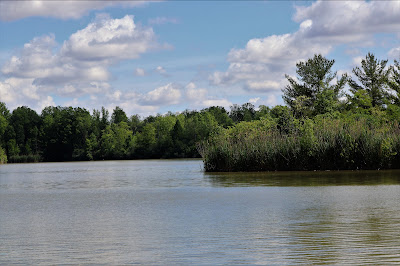A Visit to Henderson C.A.
I spent 2 days this week helping the Education Team with "live-streaming" from a canoe. Over 1,500 students from kindergarten to grade 12 participated in the program. I got to be the "muscles" and steer the canoe while they did the interpreting and videoing.
Giant Water Bugs are a common predator in ponds and wetlands. Females lay their eggs on the backs of their mates. Males then care for up to 100 eggs until they hatch in 7-14 days. They ensure the eggs get enough oxygen and protect them from predators. We were surprised to see this individual had climbed about a foot above the water surface.
https://www.inaturalist.org/taxa/81575-Belostoma-flumineum
.
During the breaks between sessions, I spent my time searching for butterflies and dragonflies. The above Least Skipper, was my first of the year!
A pair of North Crescents were interacting, perhaps in the process of choosing a mate. There were many Crescents on the trails.
A Tiger Swallowtail had to compete with a number of flies to get minerals from some Great Blue Heron "poop". These minerals aren't found in the plant nectar that they drink.
Blue Dasher, female: This species is extremely wary and difficult to approach, hence the common name "dasher." Field Guide to The Dragonflies and Damselfies of Algonquin Provincial Park and surrounding area. Colin D. Jones, et. al.
A female Clubtail! I was excited to find this individual but wasn't able to identify it to the species. I have learned they are a difficult group to identify and photos from many different angles are necessary for proper i.d. The most diagnostic characteristic of the "clubtails" is their widely separated eyes as can be seen in the photo. Field Guide to The Dragonflies and Damselfies of Algonquin Provincial Park and surrounding area. Colin D. Jones, et. al.







No comments:
Post a Comment